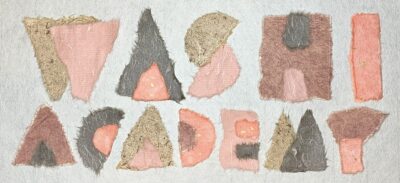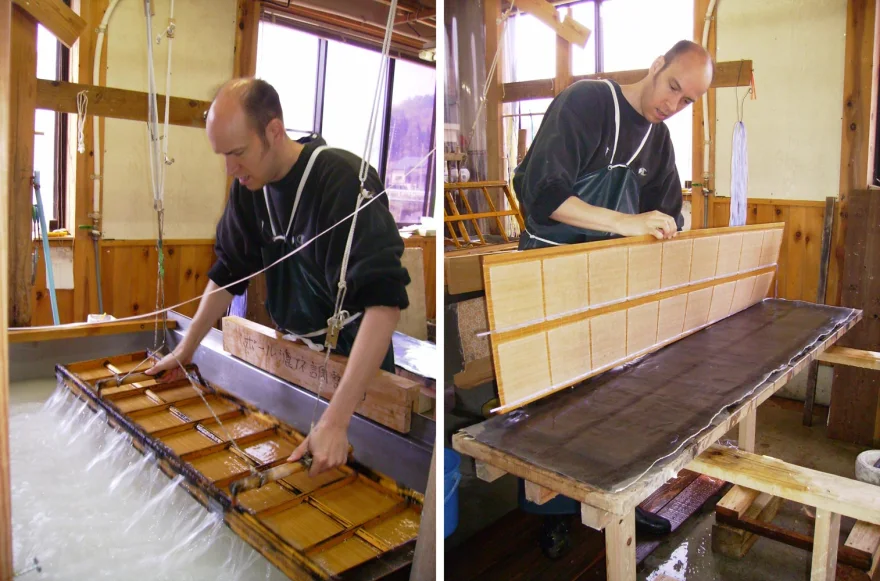Sugeta is the name for the two-piece tool used to create sheets of Japanese paper in the traditional nagashizuki method; the tool corresponds to the western mould and deckle, but is a little different in its construction. The two pieces of the sugeta are the su and the keta. The keta is a double frame (upper and lower), hinged on the back side along the long dimension, with clasps usually on the front to close the sugeta. The su is a flexible screen or mat of fine bamboo splints woven with silk thread, which fits between the upper and lower pieces of the keta and is held in place by closing the clasps on the front of the keta.
The top side of the su is where the paper is made by allowing water to drain through the su, leaving the matted fibre on the surface of the su. The su is usually made of bamboo splints which have been shaved down to around a millimetre in diameter, but su made of kaya (micanthus reed) were historically often made by farmers who could not afford to have a bamboo tool made, and these kayazu are still seen on occasion. To imitate the “antique” look afforded by a kayazu, special su are woven with bamboo splints of varying sizes. To minimize the appearance of shadows and laid lines, a sha may be attached to the top side of the su; a sha is an extremely finely woven mesh screen, usually made of silk thread, and treated with kaki-shibu (persimmon tannin) to make it waterproof.
The keta is usually made of hinoki (Japanese Cypress), and finely crafted to prevent bowing or sagging when full with fibre solution. At smaller sizes (approximately 20x30cm or less), ribs on the lower keta to support the su are not necessary, but at larger sizes they will usually be present, about 15cm apart, running the short direction. Ribs may be simple pieces of wood shaped to a point on the top side, but are most often pieces of wood with metal wire runners along the top, to minimize shadows in the finished paper. At sizes larger than approximately 30x40cm, nigiri-bo (handles) may be attached, running the short direction from the front to the back of the upper keta. Also for larger tools there is usually a suspension system, to aid the papermaker in supporting the weight of the tool once filled with fibre solution. Larger tools may produce one large sheet, or the keta may be divided by pieces of wood into a number of smaller frames, allowing the papermaker to make more than one sheet at a time.
[The author using a specially constructed sugeta to make eighteen sake labels at a time.]

